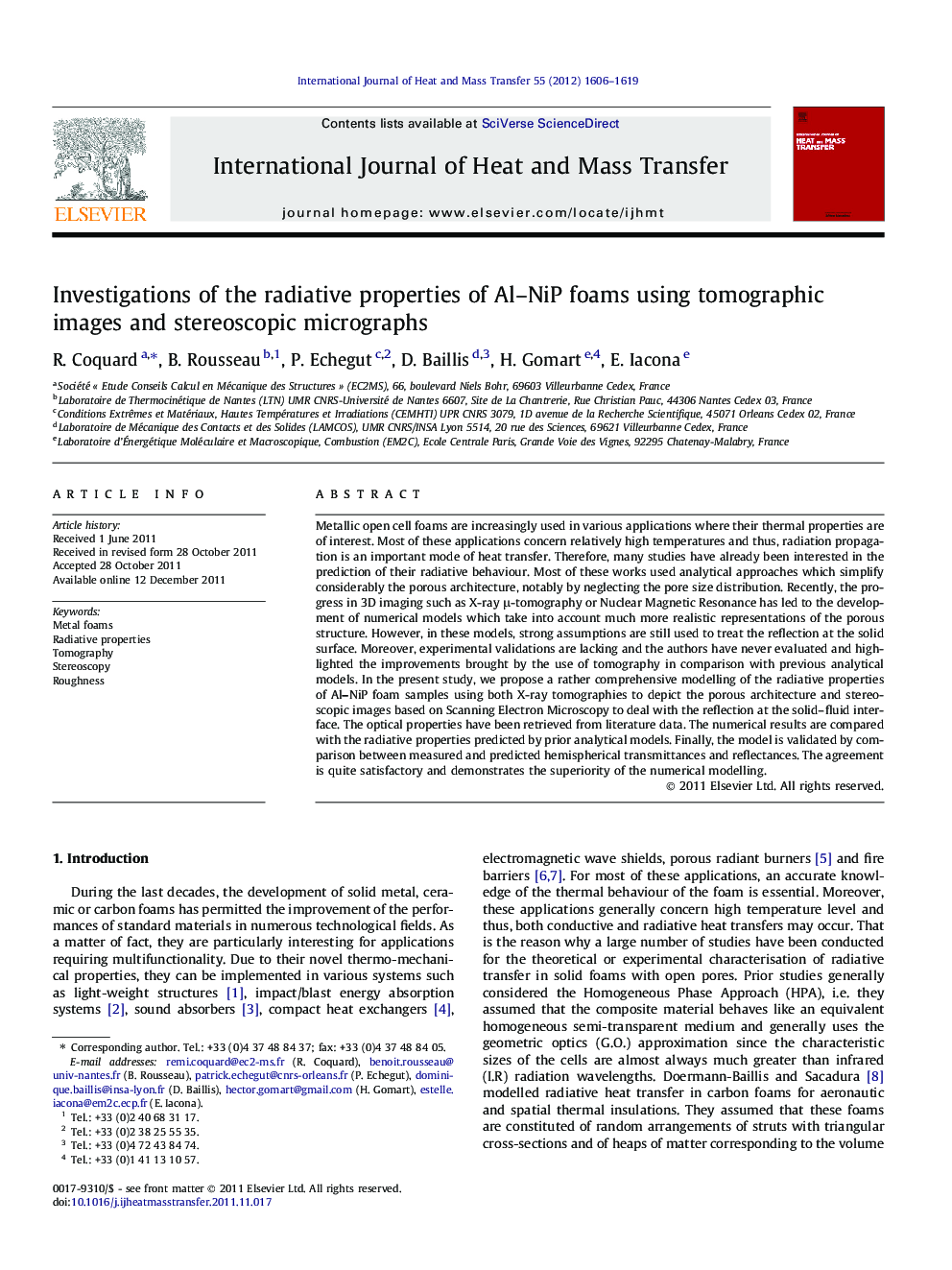| Article ID | Journal | Published Year | Pages | File Type |
|---|---|---|---|---|
| 659925 | International Journal of Heat and Mass Transfer | 2012 | 14 Pages |
Metallic open cell foams are increasingly used in various applications where their thermal properties are of interest. Most of these applications concern relatively high temperatures and thus, radiation propagation is an important mode of heat transfer. Therefore, many studies have already been interested in the prediction of their radiative behaviour. Most of these works used analytical approaches which simplify considerably the porous architecture, notably by neglecting the pore size distribution. Recently, the progress in 3D imaging such as X-ray μ-tomography or Nuclear Magnetic Resonance has led to the development of numerical models which take into account much more realistic representations of the porous structure. However, in these models, strong assumptions are still used to treat the reflection at the solid surface. Moreover, experimental validations are lacking and the authors have never evaluated and highlighted the improvements brought by the use of tomography in comparison with previous analytical models. In the present study, we propose a rather comprehensive modelling of the radiative properties of Al–NiP foam samples using both X-ray tomographies to depict the porous architecture and stereoscopic images based on Scanning Electron Microscopy to deal with the reflection at the solid–fluid interface. The optical properties have been retrieved from literature data. The numerical results are compared with the radiative properties predicted by prior analytical models. Finally, the model is validated by comparison between measured and predicted hemispherical transmittances and reflectances. The agreement is quite satisfactory and demonstrates the superiority of the numerical modelling.
